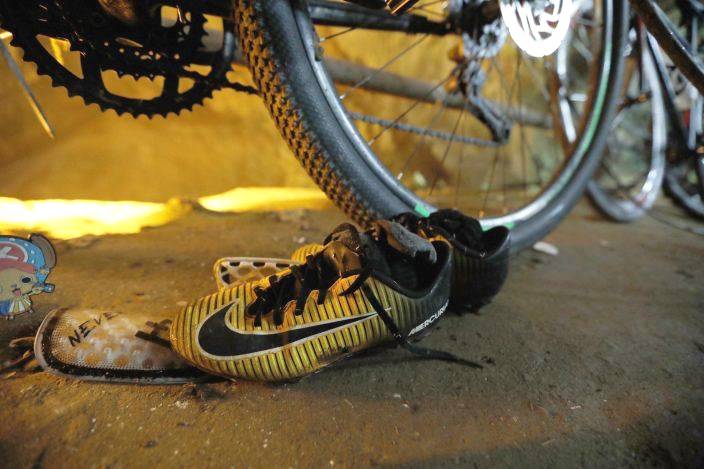The Real-Life Diet of Daniel Romanchuk, New York City Marathon Champion
Daniel Romanchuk barely recalls the end result of his first NYC Marathon; for the record, he finished 16th. That was in November 2016, when he was just 18 years old and two months removed from participating in the 2016 Paralympic Games. Marathons were a new development in Romanchuk’s life—he had dabbled in most parasports, including track and field, but didn’t start with the long-distance stuff until he was 16.
A last-minute illness kept Romanchuk out of the 2017 NYC Marathon. But it's safe to say he'll remember this year's result: He won.
X contentThis content can also be viewed on the site it originates from.
Romanchuk has seen a dramatic change in his fortunes, which he’ll only modestly affirm: “Things have gone very well recently,” he says. No kidding. Heading into this weekend’s contest, Romanchuk was already in first place in the Abbott Men’s Wheelchair Series XII standings. That improvement is, in large part, thanks to his move from rural Maryland, where he trained alone, to Champaign, Illinois, where he’s going to college to get an engineering degree while training with coach Adam Bleakney.
Romanchuk spoke to GQ prior to Sunday’s marathon about his pre-race preparations, including the exercises that wheelchair athletes hone in on to make it through a 26.2-mile course.
GQ: For readers who haven’t heard of spina bifida before, can you explain what that is?
Daniel Romanchuk: Basically, it’s a birth defect where my spinal cord did not fully close. Part of the spinal cord was exposed and damaged before birth. With my specific level—and it can happen at many different levels along the spine—I can feel my knees up just fine. But down from the knees it starts to get a little spotty.
Many runners would cite their glutes, hamstrings, and quads as the muscles they’re most concerned with in the lead-up to a marathon. For wheelchair athletes, what muscles are you most focused on?
For us, a lot of shoulders, wrists, and forearms. Those are our main concerns. Going around in a chair all day and then transitioning into a racer wheelchair to work out in, there’s so much stress on those joints and those muscles. We definitely want to keep those well-maintained and healthy.
What does a typical workout routine look like for you?
I wake up around 6:00 or 6:30 and eat breakfast. The workout is usually at 8:00. If it’s winter, we’ll be indoors doing some weights, or using what’s called a roller. It’s basically our treadmill—a shrunken, 55-gallon drum that we let the back wheels of our chair spin on so we can simulate going on long rides indoors. We’ve also got bike trainers that we’ve modified and hooked up to the rollers so that we can simulate hills as well. In the winter we get a lot more into the maintenance of shoulders and things like that. In the summer, we’ll go outside on longer rides.
So is that once a day, or twice a day?
It’s once, sometimes twice a day, for an hour to an hour-and-a-half workouts. And that’s six days a week.
Does the amount you’re exercising change as you get closer to a marathon?
We’ll taper before a marathon, but I try and keep moving and make sure everything is running smoothly.
There are normally stations with water and Gatorade available basically at each mile of a marathon. Which one do you opt for, and how often? What’s the strategy there?
I typically go for a sports drink like Gatorade. But wheelchair athletes don’t use the tables with drinks at all. We’ll have a CamelBak strapped onto our chair, and just have the hose leading up somewhere where we can grab it and get some drinks in. We try and avoid the tables as much as possible while still getting in some kind of drink or food.
You’re 20 years old and a college student, and most 20-year-old college students are not necessarily eating the healthiest foods. How important is your diet in the bigger scheme of your preparations for marathons?
It is definitely becoming a lot more important. I’m meeting with a dietician a few times a year, working with her to figure out the best plan for me with food. It’s certainly not the easiest thing to do. But as much as possible, I try and go for whole foods—I stay away from already prepared things.
My diet doesn’t change too much per workout. But breakfast is usually eggs in a burrito-ish sort of a thing. Eggs of some variety with a carb. Just looking to get adequate amounts of protein to repair muscles. My post-workout recovery is always my favorite: chocolate milk.
Are we talking about like, Yoo-hoo?
No, nothing as far as specific brands. I try and stay as consistent as possible, but with some of the travel it’s not the easiest to eat something you’re used to. But I’m getting to learn what travels well, what doesn’t, and I’ll typically bring some tortillas and peanut butter and jelly just as a fallback, something I know I can eat. I’m not too adventurous with my foods.
This interview has been edited and condensed.
Related Stories for GQReal Life DietGQ Sports
